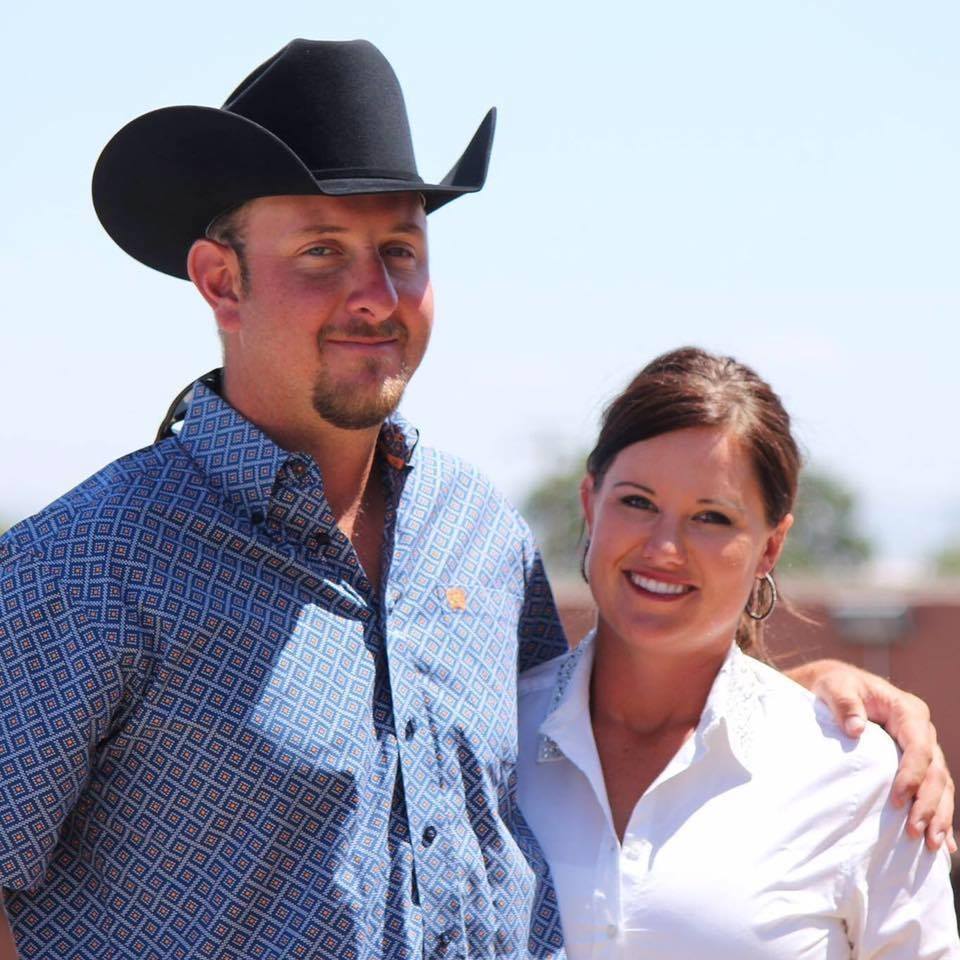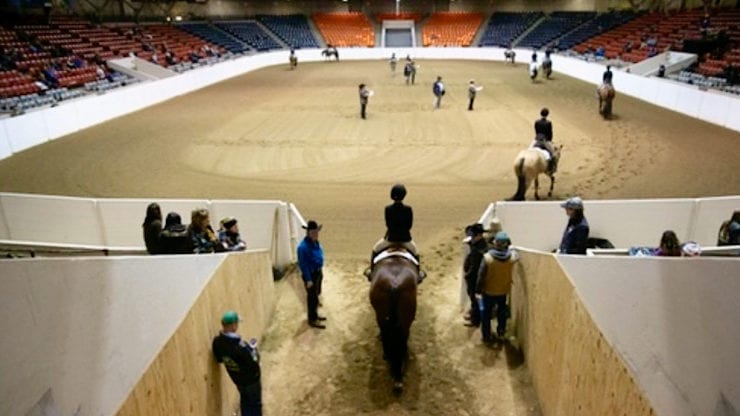Horses and humans are both unpredictable creatures. Not every single ride, pattern, and performance will be picture perfect. In fact, most equestrians face problems in the show pen more frequently than not.
These challenges can be as minute as momentarily forgetting the pattern to as intense as the horse frantically bucking at a dead gallop. Horses are large, living creatures with minds of their own. Problems are inevitable and expected.
Some exhibitors panic when faced with an issue, which usually makes the situation go from bad to worse. That flustered feeling is overwhelmingly stressful to both horse and rider. So, what should the rider think when encountering difficulties? How should he/she respond to the problem? We talked with knowledgeable trainers and judges about their thoughts on how to face challenges head-on.
What to think when a problem occurs
 It is easy for a rider to become flustered after an issue arises. Their mind races with what feels like a thousand thoughts. Some riders freeze, some panic, and others remain calm. The key to staying relaxed is controlling the thought process during the event.
It is easy for a rider to become flustered after an issue arises. Their mind races with what feels like a thousand thoughts. Some riders freeze, some panic, and others remain calm. The key to staying relaxed is controlling the thought process during the event.
Exhibitors must keep in mind their practices that took place at home and transfer that preparation to the show pen. AQHA Judge and trainer, Brad Kearns states, “Competing is the culmination of hours of practice. Therefore, the thought process for things going wrong in the show pen is developed in your practice routine. Your job as a teacher is to remind your equine partner of your practice sessions. What you would do to correct that mistake if it had happened in practice.”
Preparation is essential
 If a rider can control their thoughts during practice, it will translate to their performance in the show pen. Thus, making the exhibitor better equipped for those “uh-oh” moments in the arena.
If a rider can control their thoughts during practice, it will translate to their performance in the show pen. Thus, making the exhibitor better equipped for those “uh-oh” moments in the arena.
It is also crucial to access the problem later during an appropriate time. Judge and trainer, Leonard Berryhill, states, “When a horse has a problem in the show pen, and anyone who has ever entered the arena has had this, the first thing that comes to my mind is, why? What occurred to make this horse have this issue?”
Move on as quickly as possible
One of the worst things a rider can do is become “stuck” on one specific problem. The human brain is amazing, but it also can work against an exhibitor. The more a rider tenses up, becomes angry or scared, etc., the more those feelings translate to the horse. It makes the situation go from bad to worse.
 Jennifer Wheeler of Wheeler Performance Horses suggests, “Getting upset or frantic isn’t going to help the horse or the rider. You might as well stop, pet your horse, regroup and finish strong. Then, you can give yourself and the horse enough confidence to go back to the practice pen, fix your issues and, try again tomorrow.”
Jennifer Wheeler of Wheeler Performance Horses suggests, “Getting upset or frantic isn’t going to help the horse or the rider. You might as well stop, pet your horse, regroup and finish strong. Then, you can give yourself and the horse enough confidence to go back to the practice pen, fix your issues and, try again tomorrow.”
Another critical aspect of moving on from a problem is not to anticipate it in the future. Just because a horse acted up today does not always mean he will be bad tomorrow. Treat each ride and day as a new one. Clinging on to past problems only causes anticipation and allows them to occur again.
Controlling emotions/nerves
Being in the show pen is arguably more of a mental game than physical. Sometimes the “what if” and “oh no” moments create a roadblock for the rider. An exhibitor must learn how to balance nerves and emotions to ride at their best.
Kearns comments, “The way horses learn is through repetition, and sometimes lesson #1,247 comes in the show pen. You, as a teacher, should try to remain calm. There is no need to be embarrassed…mistakes happen to the most seasoned rider/horse combinations.”
Feelings of disappointment and embarrassment are normal, but riders need to keep in mind that everyone has experienced at least one “oh no” moment in the show pen before. An exhibitor is their horse’s teacher when in the arena, therefore, remain calm and “teach” the horse when it is needed.
Change the focal point
When in doubt, switching focus helps turn off those anxious feelings when an issue occurs. An exhibitor may think of a special song or even a single word that helps “ground” them at that moment. This technique may take some practice but is very beneficial.
Wheeler adds, “If you cannot find a way to relax and get through it, I try to tell my clients to “sing your favorite song in your head” or “think about what you’re going to do for dinner later.” Anything you can do to stay as calm as possible while handling the situation.”
An equestrian’s ability to alter their focal point is beneficial during a horse show “hiccup.” The majority of showing is a mental game and this technique helps the rider play the game by staying calm.
Everything is a learning experience
Successful riders treat each ride as a learning experience. Wheeler says, “Anytime you have something ‘negative’ happen with a horse, it is an opportunity for learning and growth. You cannot learn without failure, so the sooner you accept that as part of this journey, the better horseman you will be.”
Riding and showing horses is full of ups and downs. Knowledgeable equestrians know to treat each victory and defeat as a chance to grow. Sometimes the best option is to step back, take a deep breath, and try again later.
Exhibitors often forget that there is always another horse show around the corner. Berryhill adds, “For the one time, I try not to be too disappointed, and realize that I can go imitate this scenario somewhere, smooth over the issue, and be ready to compete later.”
Kearns concludes by saying, “Here’s the takeaway: A correction made in anger comes across as harsh retribution. A correction made from thoughtfulness is a lesson.”









